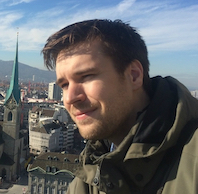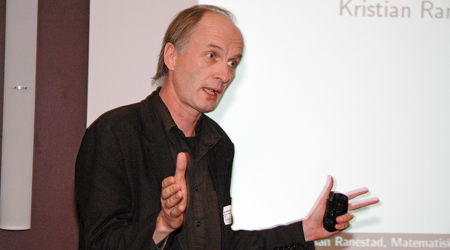Algebra seminar 2021
Previous
Stable polynomials are a multivariate generalization of real-rooted univariate polynomials. This notion of stability for hypersurfaces can be extended to lower-dimensional varieties, giving rise to positively hyperbolic varieties. I will present results showing that tropicalizations of positively hyperbolic varieties are very special polyhedral complexes with a rich combinatorial structure. This, in particular, generalizes a result of P. Brändén showing that the support of a stable polynomial must be an M-convex set.
In a famous paper, Geir Ellingsrud and Stein Arild Strømme use the Atiyah-Bott localization theorem in equivariant cohomology to compute the number of complex twisted cubics on a complete intersection. Motivated by results from A1-homotopy theory there is a new way of doing such enumerative counts which works over an arbitrary base field, not only the complex numbers. Recently, Marc Levine proved a version of Atiyah-Bott localization for this new way of counting.
In the talk I will recall the classical Atiyah-Bott localization theorem and explain how one can use it in enumerative geometry. Furthermore, I will explain how this new way of counting works and present some results about twisted cubics on complete intersections counted this way. This is based on joint work with Marc Levine.
For the second talk, I will talk about how to relate relative Gromov--Witten invariants with relative periods via relative mirror symmetry and, given a degeneration, how relative periods and (absolute) periods are related on the mirror side.
A cohomology class of a smooth complex variety of dimension n has coniveau ≥c if it vanishes in the complement of a closed subvariety of codimension ≥c, and has strong coniveau ≥c if it comes by proper pushforward from the cohomology of a smooth variety of dimension ≤n−c. We show that these two notions differ in general, both for integral classes on smooth projective varieties and for rational classes on smooth open varieties. This is joint work with Olivier Benoist.
A graded Artinian Gorenstein ring A is a quotient of a polynomial ring S with the apolar ideal of a homogeneous form. The Betti numbers of the resolution of A as an S-module are invariants to the homogeneous form. In joint work with Michal and Gregorz Kapustka, Hal Schenck, Mike Stillman and Beihui Yuan, we use these Betti numbers to describe a stratification of the space of quartics in four variables.

